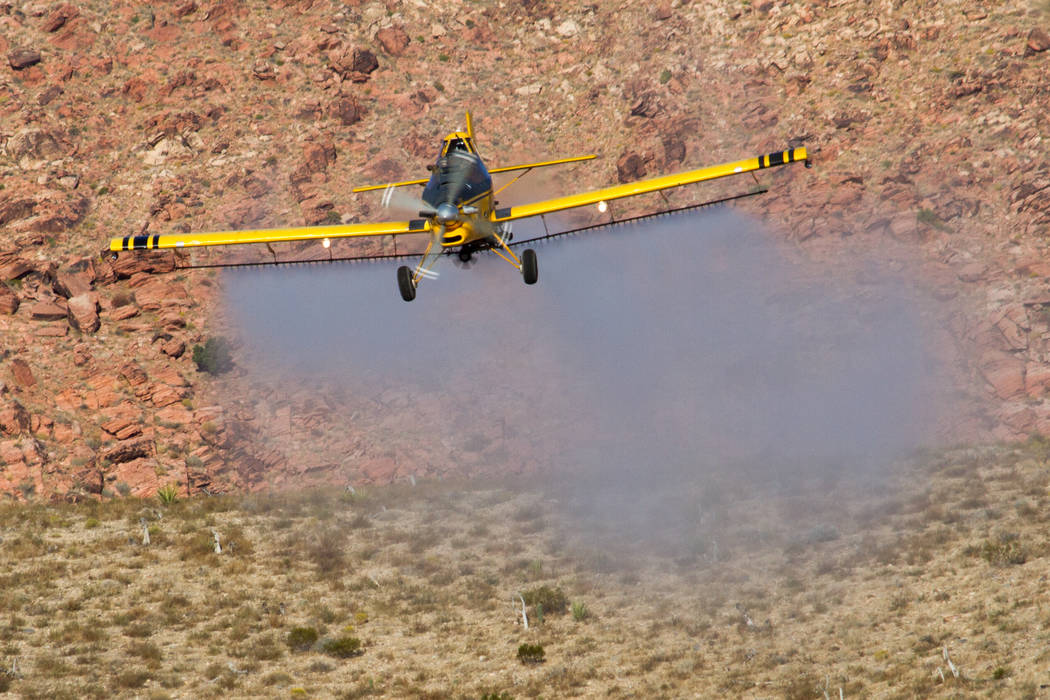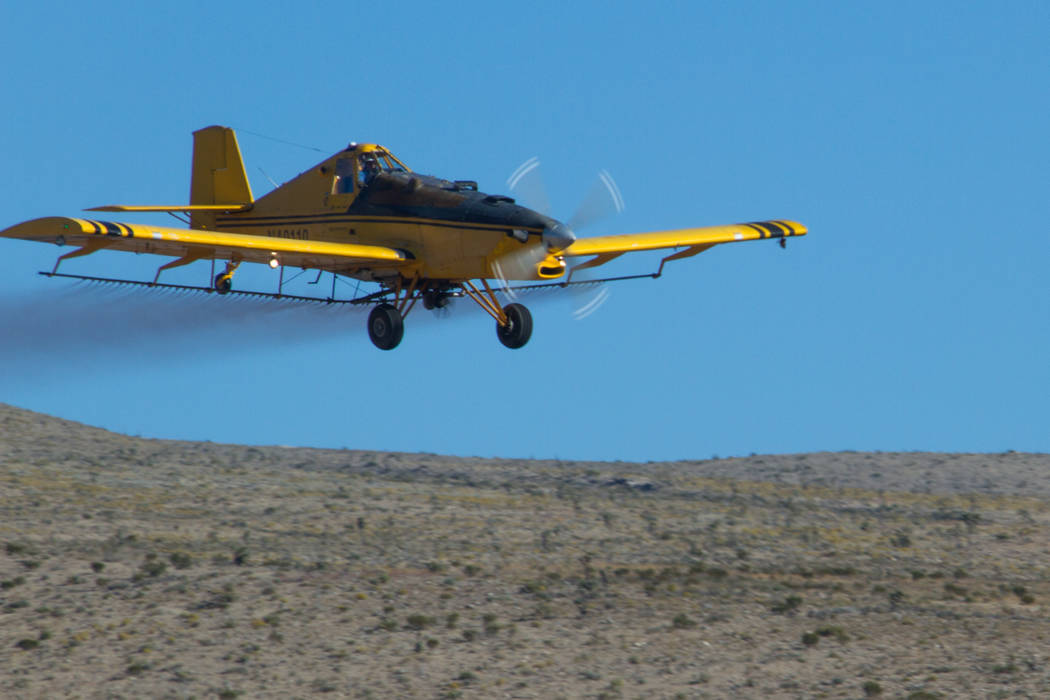BLM spraying to kill invasive nonnative grasses in burn areas
The Bureau of Land Management is about to launch an air and ground assault against invasive grasses in Southern Nevada.
Herbicide treatments, set to begin Tuesday, will target red brome and other nonnative grasses along the 13-mile Scenic Drive at Red Rock Canyon National Conservation Area and at three other sites that have been slow to recover years after they were scorched by wildfires.
Between now and December, an herbicide known as Imazapic will be applied by hand in parts of Red Rock Canyon burned by the lightning-sparked Loop Fire, which blackened 2,565 acres between the Red Rock visitor center and the Calico parking lots in 2005.
The same chemical will be sprayed this week from an airplane onto public land burned by the 33,437-acre Goodsprings Fire, about 3 miles northwest of the community of Goodsprings; the 43,698-acre Fork Fire, in the southern part of Gold Butte National Monument in northwest Clark County; and the 71,087-acre Halfway Fire in Lincoln County, 14 miles northwest of Mesquite.
The natural vegetation has been slow to recover since those areas burned more than a decade ago.
BLM crews and contractors are trying to re-establish native plants on hundreds of scattered, 2.5-acre “islands” in hopes of recolonizing the burned areas and restoring habitat for the federally protected desert tortoise. Up to 90,000 native seedlings and several hundred pounds of native seeds are expected to be planted as part of the three-year effort.
To test the effectiveness of the herbicide treatments, only about half of the vegetation islands will be sprayed.
The herbicide is designed to stay in the soil for more than a year and kill the invasive grasses as they germinate. The chemical was chosen because it does not harm native plants or wildlife, said Kirsten Cannon, spokeswoman for the BLM in Las Vegas.
This is the last of three herbicide treatments planned for the four areas. Roughly 400 acres has been sprayed in each of the annual treatments.
The U.S. Geological Survey is providing scientific expertise for the effort.
Red brome and other fast-spreading, invasive grasses are causing problems across the West, where they squeeze out native plants and provide fuel for larger and more frequent wildfires. Those fires then open more of the landscape to be colonized by nonnative grasses, leading to what experts call the “invasive annual grass fire cycle.”
Contact Henry Brean at hbrean@reviewjournal.com or 702-383-0350. Follow @RefriedBrean on Twitter.
On the web
The Bureau of Land Management's environmental assessment for the herbicide treatments slated to start Tuesday in Red Rock Canyon and three other sites is available online at https://go.usa.gov/xPjWG.























